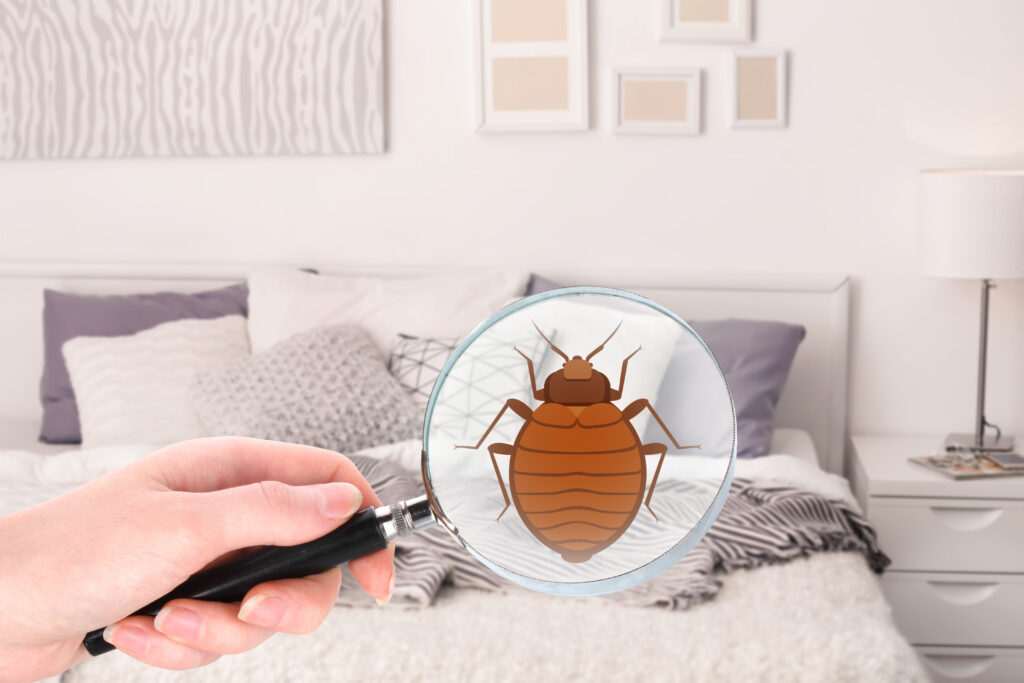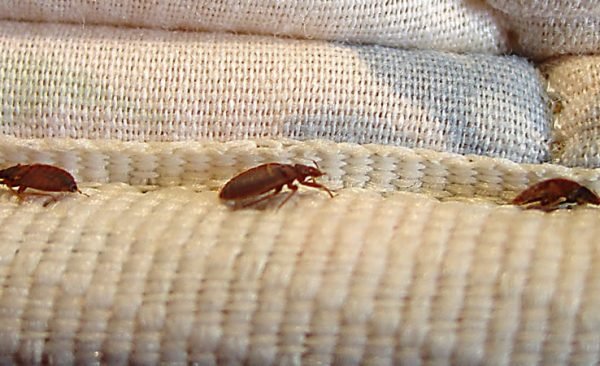Affordable Bed Bug Heat Treatment for Quick and Effective Results
Affordable Bed Bug Heat Treatment for Quick and Effective Results
Blog Article
Get Enlightened About the Types of Parasite Control Techniques and Their Benefits for Property Owners
Understanding the various insect control methods available to homeowners is essential for reliable parasite monitoring. House owners that are knowledgeable can make tactical choices that not only address parasite problems however also enhance the total top quality of their living atmosphere.
Chemical Insect Control Methods
Chemical parasite control approaches are an important element of integrated pest monitoring methods for property owners seeking reliable services to pest infestations. These approaches include the application of chemical substances created to get rid of or deter parasites that threaten personal building, health and wellness, and convenience. Typical chemicals used consist of pesticides, herbicides, rodenticides, and fungicides, each customized to target particular parasites.
The main benefit of chemical insect control is its quick effectiveness; lots of solutions supply prompt results, minimizing pest populaces substantially quickly. Additionally, advances in chemical formulas have actually brought about products that are a lot more eco-friendly and have lower poisoning degrees for non-target microorganisms when applied properly.

Organic Bug Control Techniques
All-natural bug control methods have actually gotten importance as homeowners look for safer and more lasting alternatives to traditional chemical techniques. Biological parasite control methods utilize all-natural predators, bloodsuckers, or microorganisms to manage bug populations properly. This technique is not only eco-friendly yet likewise minimizes the threat of damage to non-target species, including helpful insects and wild animals.
One of one of the most common organic control methods entails introducing all-natural predators right into the environment. For instance, ladybugs can be used to manage aphid populaces, while nematodes target soil-dwelling pests like grubs. Additionally, parasitoids-- microorganisms that live on or within a host-- can be utilized to regulate certain pest types by laying eggs inside them, inevitably leading to their death.
Another method is making use of biopesticides, which are originated from all-natural materials such as germs, minerals, or plants (bed bug exterminator). These products can successfully target pests while positioning marginal risk to people and family pets. Generally, organic insect control techniques offer house owners with a reliable methods of pest administration that lines up with environmental concepts, advertising a much healthier living setting while lowering dependence on synthetic chemicals
Mechanical Pest Control Methods
Mechanical parasite control techniques include a selection of approaches that literally prevent or get rid of bugs without using chemicals. These strategies are specifically useful for home owners seeking eco-friendly options while ensuring the safety of their living rooms.
One common approach is using obstacles, such as traps, screens, and webs, which protect against parasites from getting in homes or specific areas. Setting check these guys out up home window screens can efficiently keep pests out, while utilizing physical barriers around yards can hinder larger insects like bunnies or deer. Furthermore, mechanical traps created for rodents can catch and remove these pests without the requirement for harmful substances.
Another reliable strategy involves using mops and vacuum cleaners to remove parasites directly from surface areas. Regular cleaning and upkeep can substantially reduce parasite populations by eliminating food resources and hiding areas. Employing devices like ultrasonic parasite repellents can discourage different parasites through noise waves that are unpleasant to them yet inaudible to humans.
Social Insect Control Practices
Social bug control practices concentrate on modifying the atmosphere and management techniques to create conditions that are less for pest invasions. These techniques are essential in preserving a balanced ecological community and lowering the reliance on chemical treatments. By changing agricultural methods, home owners can properly deter parasites while advertising plant health.
One usual method includes plant rotation, which interferes with the life process of bugs by altering the sorts of plants expanded in a certain location (bed bug exterminator). This not just lessens pest populations but additionally boosts dirt wellness. Additionally, intercropping-- growing diverse crops in closeness-- can perplex insects and minimize their ability to situate their preferred host plants
Water monitoring is another crucial aspect of social techniques. Correct watering strategies can protect against standing water, which serves as a directory breeding ground for mosquitoes and various other bugs. Preserving sanitation in and around the home, such as regularly removing debris and food waste, can dramatically minimize parasite destination.
Including these cultural techniques into a detailed bug administration approach enables homeowners to create a setting that naturally deters parasites, consequently enhancing the efficiency of other control methods while promoting lasting horticulture and landscaping.

Integrated Bug Monitoring Approaches
Integrated Insect Management (IPM) stands for a holistic method that integrates different strategies to effectively handle pest populaces while decreasing environmental influence. This methodology integrates biological, cultural, physical, and chemical methods to achieve lasting parasite control. By assessing pest populaces and their all-natural adversaries, IPM emphasizes surveillance and recognizing insects prior to implementing control measures.
One of the core concepts of IPM is the use of limits, which establish the degree of parasite task that requires intervention. This ensures that treatments are applied only when essential, lowering the dependence on chemical pesticides. Biological control approaches, such as presenting all-natural killers or bloodsuckers, job in conjunction with cultural techniques like plant rotation and environment adjustment to interfere with pest life cycles.
Additionally, IPM motivates the use of least-toxic chemical alternatives when treatment is essential, focusing on products that present very little danger to non-target organisms and the environment. For homeowners, adopting IPM approaches not just boosts the efficiency of parasite administration but additionally promotes a much healthier living setting, fostering biodiversity and reducing chemical direct exposure. Ultimately, IPM encourages property owners to make enlightened decisions that stabilize bug control with ecological obligation.
Conclusion
In conclusion, understanding the various pest control approaches encourages home owners to make enlightened choices relating to pest monitoring. Each technique-- chemical, biological, mechanical, cultural, and integrated pest management-- supplies distinctive advantages that cater to different demands and choices.
Comprehending the different insect control methods readily available to home owners is crucial for efficient insect management.Chemical pest control approaches are a critical part of incorporated insect management approaches for house owners seeking fleas effective remedies to pest problems. In general, biological parasite control methods provide homeowners with a reliable ways of pest monitoring that lines up with ecological concepts, promoting a much healthier living atmosphere while reducing dependence on synthetic chemicals.
Social bug control practices concentrate on customizing the environment and administration techniques to produce conditions that are less helpful to pest invasions.In conclusion, understanding the different pest control approaches empowers home owners to make educated choices concerning pest monitoring.
Report this page